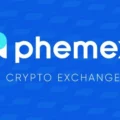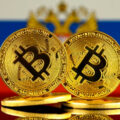Article Reading Time:
10 min.

Opinion
A new trend in cryptocurrencyexchanges may become Proof-of-Reserves (PoR). This is proof that the exchange has reserves to cover customer deposits. Online Proof of Reserves – Myth or Reality?
After the sudden collapse of FTX, manytraders panicked and a mass exodus from the exchanges began. The technically advanced flocked to DEX, while the more cautious decided to sit on the fence, with bitcoins in their personal wallet.
FTX's bankruptcy is not due to shortcomingscryptocurrencies as a technology, so it is most likely that its consequences will be short-term, despite the amount of information noise. The market is influenced by many other, stronger factors. And yet, it will not pass without a trace for the industry and will lead not to collapse, but to a recovery in the market.
The biggest closures of cryptocurrency exchanges and how to protect yourself from them
Over the years, the cryptocurrency world was shocked by three high-profile exchange collapses, resulting in losses for hundreds of thousands of clients:
February 2014: MtGOX bankruptcy, according to the official versioncaused by a robbery of 850,000 BTC, at the date of bankruptcy declaration - about $480 million. Later, 200,000 BTC were covered by the owner of the exchange, Mark Karpeles, from the reserve wallet. The “hackers” have still not been found, and research suggests that there was no instant robbery. It is more likely that bitcoins were withdrawn from MtGOX gradually over two years, possibly with the participation of an insider. Bankruptcy was only a public recognition of insufficient capital and the impossibility of paying traders.
July 2017: closure of the Russian-language exchange BTC-eAmerican intelligence agencies. In the fall of 2018, the WEX exchange slowly died, a failed attempt to revive BTC-e on a more legal basis. Even six years later, the actual losses and number of victims are unknown, as is the location of the exchange's main assets. Traders are believed to have lost hundreds of millions of dollars on BTC-e. Many versions remained unproven. The only Russian citizen reliably involved in BTC-e, Alexander Vinnik, is in an American prison. The fate of another alleged administrator of BTC-e Alexey Bilyuchenko remains unknown.
November 2022: the first collapse of relatively legal and publicFTX exchange caused by market factors. Despite the mass of conspiracy theories, no criminal trace has been identified behind FTX. The most likely reason for the bankruptcy of the exchange remains unskilled asset management on the part of its subsidiary Alameda Research.
Participation in dubious projects,The geopolitical crisis and the fall of markets led to the formation of a “hole” of up to $10 billion. FTX owner Sam Bankman-Fried allocated $4 billion to save his subsidiary, mainly belonging to clients. FTX's total debt to creditors could range from $3 billion to $6 billion. This is the largest bankruptcy in the history of the fiat currency industry. However, in Bitcoin, losses on MtGOX remain unrivaled.
The interesting thing about these bankruptcies is that they are allбыли вызваны разными причинами. А значит, от каждого из них нужна своя защита. Впрочем, единственная защита при использовании централизованных бирж — это постоянный мониторинг рынка и новостей. И при появлении информации о проблемах биржи самым благоразумным будет брать ноги в руки и спасаться бегством. Если слухи окажутся ложными, вернуть активы на биржу не составит труда.
Protection from Gox
В 2013-м году MtGOX была крупнейшей биржей cryptocurrencies The “too big to fail” factor was the main reason for investor confidence - no one believed in the possibility of the stock exchange going bankrupt. But the “underwater part of the iceberg” turned out to be unreliable for purely technical reasons. It doesn’t matter how MtGOX was hacked, whether the theft was a one-time event, or whether the exchange was really “milked” for two years.
The main vulnerability of MtGOX was in the beginning of everythingexchange operations per person, Mark Karpeles. He single-handedly developed all the code, made development decisions, managed capital, and even ordered water for the office. As a result of such hypertrophied centralization, the exchange naturally collapsed. Mark Karpeles served several years, and clients are still waiting for payments.
MtGOX did not have an audit policy implementedreserves and program code. To protect against such cases, it is necessary to pay attention to the quality of the exchange’s services, its publicity, the level of corporate governance and the availability of financial audits. And only then look at low commissions, referral bonuses and other means of attracting clients. This is especially true for exchanges that have recently entered the market.
Large modern cryptocurrency exchanges have alreadyhave grown from the “handicraft” level and are not tied to one person. They have their own development staff and a complex management structure. Due to the huge number of new projects, hacks happen frequently. However, in recent years, they usually do not lead to critical consequences for large exchanges.
Protection against BTC-e
According to the degree of anonymity of both owners andclients, BTC-e was unique even for its time - now there are no such platforms left. But cryptocurrency exchanges are still associated with the shadow economy, which means they risk falling under investigation or even a raid by intelligence services.
When choosing an exchange you need to pay attentionon jurisdiction and disclosure of information about its owners. If the real beneficiaries of the exchange are unknown, not public, or there are suspicions that they are just dummies, this should be taken into account as a serious risk factor. Offshore jurisdiction also increases risk.
Most cryptocurrency exchanges are still not public enough, but the industry's biggest players are already doing a lot to compete for customers.
FTX Protection
The bankruptcy of FTX was not unexpectedonly for clients, but even for many exchange employees. The company and its founder were public, the technical part of the platform worked flawlessly. A large customer base and good marketing, even in a falling market, allowed the exchange to generate profits and delight numerous investors, including large venture capital funds and leading companies in the industry.
It is still difficult to explain why so manyAt the time, no one paid attention to the risks of securing Alameda Research’s capital with its own token, because its reporting was available to investors. Obviously, the FTT token was a reliable asset in their eyes, although the company was holding itself in the air by the hair, like Baron Munchausen.
It is likely that there is a hole in Alameda's financesResearch and the parent company were discovered truly by accident and this was a consequence of publicity. If the backing of Alameda's assets by FTT tokens had not been disclosed, Binance CEO Changpeng Zhao would not have had a reason to tweet scathingly.
How can a retail investor and a simplefor a speculator to protect himself from the risks of bankruptcy of another exchange, if a sudden drop threatens even the largest and most public ones? Risks cannot be completely avoided in a free market. But exchanges that conduct independent audits and periodically publish reports are more trustworthy than others. These now include Coinbase and Kraken; Binance, Bitfinex, Bitstamp, Huobi and other top twenty exchanges are actively pursuing them. The situation with Asian exchanges is more complicated, since they operate in a slightly different reality, and their approaches are not always clear to investors accustomed to Western standards of information disclosure.
What is Proof-of-Reserves and what will it change
Today's best anti-panic remedyinvented by Binance founder Changpeng Zhao. He is going to implement a truly new concept that brings centralized exchanges closer to decentralized ones. Recently, Binance began publishing information about the total bitcoin balances in its wallets called
“Proof of reserves” (Proof-of-Reserves, PoR).
The system is still in its infancy.It displays only the amount of bitcoins of users in the exchange wallets “withdrawn” at a certain point in time. At the time of publication, one photo from November 22 is available. Over time, a more complete and up-to-date impersonal layout of the presence and movement of assets of both users and the exchange itself can be implemented. Now on the service page it is noted that the exchange’s own funds are stored in separate wallets.
Shortly after the launch of PoR, the founder of KrakenJesse Powell said that "the evidence is not real" because it does not take into account liabilities and negative account balances. However, according to the service page and the Binance announcement, when calculating reserves, not only the presence of BTC in wallets is taken into account, but also the obligations open on them: in margin and derivative trading, as well as Binance Earn services. In addition, it is planned to involve third-party auditors and implement the zk-SNARKS protocol to “reconcile balances” for all user assets. Without detailed calculations, we still have to choose who to believe (or not to believe).
Binance customers can check their reserves byyour own accounts in your Personal Account on the exchange, as well as directly on the blockchain using an open-source Python tool. In its current form, only technically advanced users can perform such an operation.
At the time of publication, the PoR is validexclusive to BTC, but in the coming weeks Binance plans to expand it to all major cryptocurrencies and tokens, and eventually even all exchange-traded ones. However, in its current form, the “evidentiary value” of PoR is still insufficient, since it only shows the total value, without showing what is behind the scenes. Therefore, Proof-of-Reserves requires an independent audit.
If such an audit system is expanded andenabled for all major crypto assets, it will truly revolutionize the transparency of cryptocurrency exchanges. This level is still not available even for the most regulated stock exchanges and brokers. After all, even the regulator does not see the real picture of their current state. He has access only to periodic reporting, which still needs to be verified, and current transactions passing through the exchange, which can also be distorted.
Since “proof of reserves” is stillnew technology, natural questions arise about it. Firstly, this is proof of the correspondence of the demonstrated data with real crypto assets of the exchange and operations with them. Cheating in a transparent blockchain is much more difficult than with fiat money, where without external control you can draw any numbers. But cryptographic proofs provided on the basis of unverified source data are not flawless.
Second, even more important circumstance -centralized exchanges work not only with crypto assets, but also with fiat currencies. But here, real-time online checks are not possible. As the FTX story showed, a hole in capital can arise for external reasons beyond the control of the exchange's operations. And if the debt accumulates in fiat assets, then the PoR system will in no way be able to show its existence.
Thus, fully verifyThe reliability of the financial condition of the exchange can only be achieved using traditional methods. This is a periodic cross-audit of its work by independent organizations. That is, one auditor checks the operation of the exchange, and the second checks the results of the first. And exchanges that take such a step can be considered truly reliable. But their clients can forget about anonymity and tax evasion, except for obviously criminal methods.
Don't forget about the additional warrantythe capital of the exchange - its “pot”, placed in the security of its own stablecoin. Also, subject to an independent external audit, tens of billions of dollars in collateral for USDT, USDC and BUSD serve as a strong argument in favor of the solvency of the parent companies. But Huobi’s recent refusal of its own stablecoin may be a negative signal indicating that the exchange does not have free funds.
</p>The ideal “exchange of the future” could bea platform that will be able to combine “managed anonymity” and traders’ control over capital, characteristic of DEX, with the speed and convenience of transactions, which so far only centralized exchanges can boast of. But will regulators allow such a hybrid to exist?





